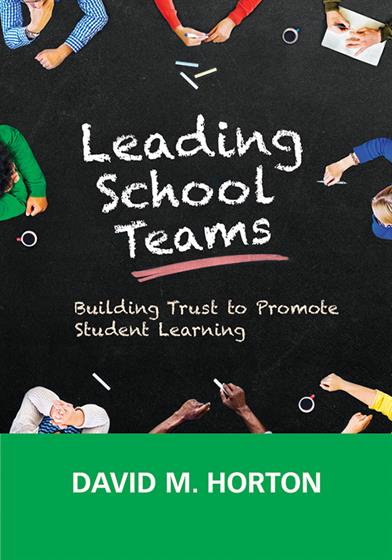Acknowledgments
About the Author
Introduction
Sustained Improvement Requires Teams
What This Book Is—What This Book Isn’t
Quick-Start Diagnostic
Making a Selection
Putting It All Together
Activity Guidelines
Components of Team Activities
PART I. EXAMINATION AND IDENTIFICATION OF THE PROBLEM
Chapter 1. Learning Leadership
Leaders and Teams
The Realities in the Leadership of Learning
Application Activity 1.1—Assessing Your Organizational, Team, and Personal Strengths
Application Activity 1.2—Effective Learning Leaders
Application Activity 1.3—Strong Learning Teams Exhibit Common Characteristics
Conclusion
Chapter 2. A Problem Worth Solving and the Ideas to Solve It (the Filters)
Introduction
Ideas Are Fragile—Ideas Are Delicate
The Fosbury Flop, Ski Jumping, and Newton
Application Activity 2.1—Treating Ideas in a Learning Organization
Application Activity 2.2—Ideas That Don’t Work: Part of the Process
Application Activity 2.3—It Takes Other People Sooner or Later
Application Activity 2.4—Who and What You Have Around You
Deeper Use of This Chapter (Deeper Dive)
Conclusion
Chapter 3. Why Solve the Problem That Needs Solving (the Filters)
Introduction
Application Activity 3.1—What the Result of a Great Decision Looks Like
Application Activity 3.2— Reasons to Have the Idea in the First Place
Application Activity 3.3—The Problem That Needs Solving: Clear, Concise
Application Activity 3.4—The Role of the Leader in Developing Ideas
Application Activity 3.5—Harnessing the Forces Around You
Deeper Use of This Chapter: Deeper Dives
Conclusion
PART II—INTROSPECTION, BEHAVIORS, TYPES: THE HOW AND WHO TO SOLVE PROBLEMS
Chapter 4. How the Problem Is Solved
Introduction
Application Activity 4.1— Importance of a Process
Application Activity 4.2—Trust
Application Activity 4.3—Fear of Conflict
Application Activity 4.4—Commitment
Application Activity 4.5—Accountability
Application Activity 4.6—Attention to Results
Application Activity 4.7—Generating Ideas and Action Steps
Deeper Use of This Chapter: Reusable Prompts
Deeper Use of This Chapter: Deeper Dives
Conclusion
Chapter 5. The People Who Will Solve the Problem
Introduction
Application Activity 5.1—Know How to Build and Use People
Application Activity 5.2—The Chemistry of the Team
Application Activity 5.3—Managing the Creative Team
Application Activity 5.4—Handling Conflict in the Ideas From the Team
Deeper Use of This Chapter: Deeper Dives
Conclusion
Chapter 6. The People in the Room (the Types)
Introduction
The Assessment
The Basics
Application Activity 6.1—Part 1/Type 1: The Idea
Application Activity 6.2—Part 2/Type 2: Organization and Execution
Application Activity 6.3—Part 3/Type 3: Forces of Community
Application Activity 6.4—Part 4/Type 4: Leadership Capacity
Using the Four Types
Conclusion
PART III. FUNCTIONALITY OF THE TEAM
Chapter 7. People, Leadership, Support (the Fuel Sources)
Introduction
Fuel Source A: The People
Application Activity 7.1—Who
Application Activity 7.2—What
Application Activity 7.3—How (Coaching)
Deeper Use of This Chapter: Deeper Dives
Fuel Source B: The Resource of Leadership
Application Activity 7.4—Keep Things Moving (Management Leadership)
Application Activity 7.5—Keep People Moving (Leadership Management)
Deeper Use of This Chapter: Deeper Dives
Fuel Source C: The Supports
Application Activity 7.6—Gather, Collect, Assess
Application Activity 7.7—Feedback
Application Activity 7.8—Systems and Barriers
Application Activity 7.9—Performance
Deeper Use of This Chapter: Deeper Dives
Conclusion
Chapter 8. Team Dynamics, Blunders, Traps, Directions, and Connecting Dots (the Pink Elephants)
Introduction
Application Activity 8.1—Pink Elephants
Application Activity 8.2—Team Dynamics
Application Activity 8.3—The Blunders
Application Activity 8.4—The Traps
Application Activity 8.5—Ideas as Direction
Application Activity 8.6—Connect the Dots
Deeper Use of This Chapter: Deeper Dives
Conclusion
Chapter 9. Performance, Feedback, and Other Ways to Support, Maim, or Kill a Team (the Good, the Dangerous, and the Lethal)
Introduction
Application Activity 9.1—The Good: Selling the Idea: A Picture Is Worth 1,000 Words
Application Activity 9.2—The Good: Communication and Frequency
Application Activity 9.3—The Good: Ingredients of the High-Performing Team
Application Activity 9.4—The Dangerous: Planning Mistakes
Application Activity 9.5—The Lethal: Lack of Feedback, Feedback, Feedback
Application Activity 9.6—The Lethal: Mistaken Assumptions of People and Meetings
Conclusion
Chapter 10. Leadership, Support, Structure, and Conclusion
Leadership
Support
Structure—The Overall Structure: The First 15 Minutes, the Next 45 Minutes
Conclusion
References
Index



